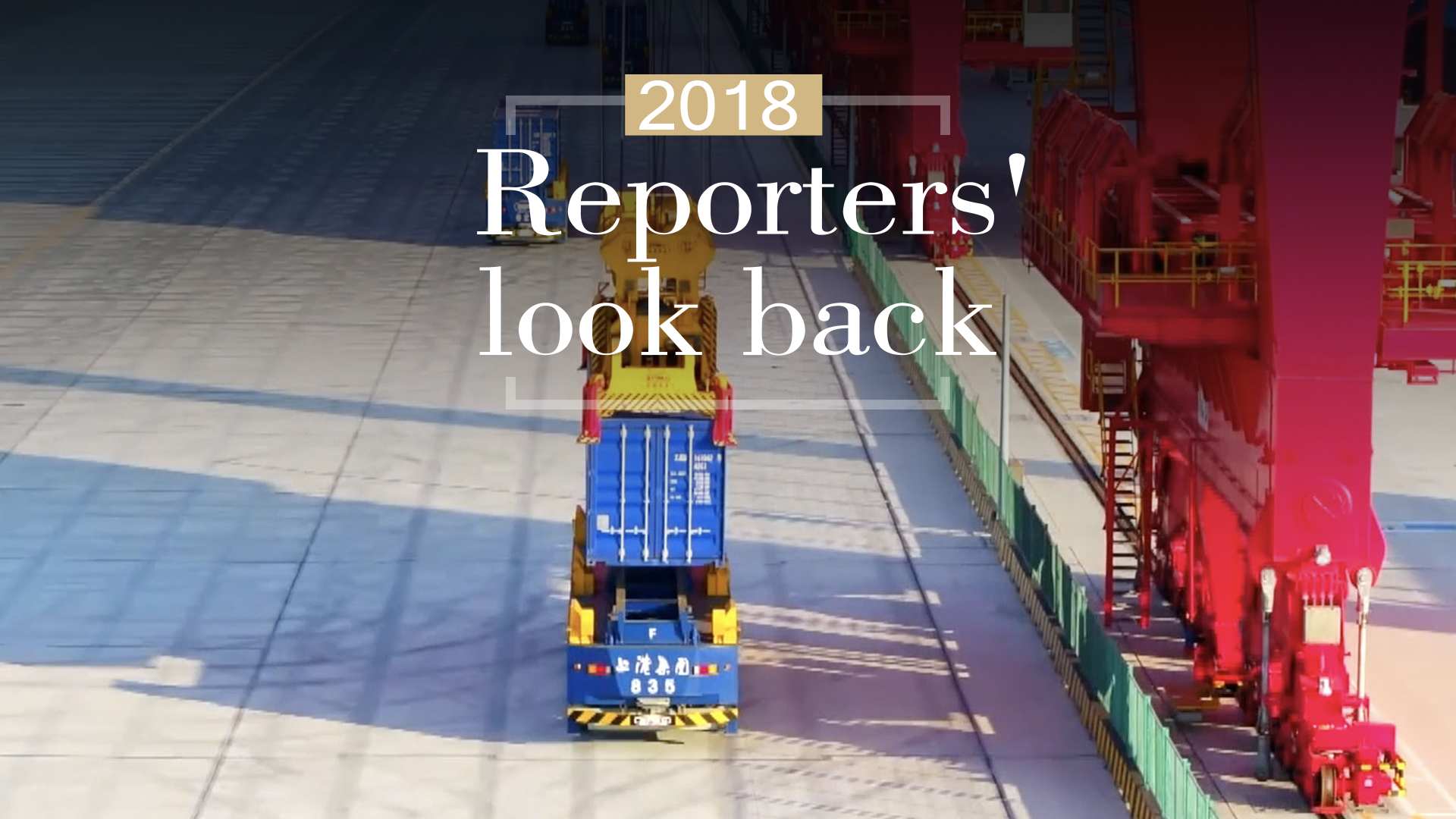
China
14:14, 29-Dec-2018
2018 Reporters' look back: How far China has come
Updated
14:13, 01-Jan-2019
By Yang Chengxi
03:10

2018 marks my second year in Shanghai after being relocated from Beijing. As a business reporter, I was tossed into a goldmine of business, financial and technology news.
I knew I had a lot on my plate when the year kicked off because 2018 marks the 40th anniversary of the famed "reform and opening-up" policy, which saw China's embrace of the market economy and provided people with countless opportunities. As such, the policy has been the catalyst for China's economic miracle in the past half century.
Shanghai and the greater Yangtze Delta region have no shortage of examples of the policy's transformative effects. We interviewed entrepreneurs who can attest to China's opening and growth, such as the founder of a Shanghai crayfish restaurant chain who started off as a street peddler, or the founder of the domestic car brand Geely, which is so successful that it even acquired Volvo.
By chatting with financiers and business owners, I understood that 2018 was the year that Chinese companies, large or modest, faced increased uncertainty. The economy is in transition, marked by slower growth and changing structures.
The trade conflict with the U.S. isn't helping. The former director-general of the World Trade Organization Pascal Lamy told me about his concerns regarding the current world trade order, the dynamics of which are rapidly shifting. Lamy wanted to build greater trust between large stakeholders in an uncertain landscape, so he joined the top business school in Asia to research and develop ideas aimed at fostering greater understanding between China and Europe.
However, efforts at building global relationships are happening against a backdrop of rising isolationist sentiment, as demonstrated by the ongoing trade war between the U.S. and China. Despite bilateral tensions, American corporations are finding China to be an ever more important market in their global operations.
This was the impression that I got when I interviewed the founder of U.S. beverage firm Starbucks, Howard Schultz, who made his last trip to China in July as executive chairman of the company before he retires this year. He told me that he was glad to make the decision, against doubts from shareholders, to enter the Chinese market in 1999. He saw great potential in the rising purchasing power of the Chinese middle class, and he was proven right. A new Starbucks store opens every 12 hours.

Interview with Howard Schultz /CGTN Photo
Interview with Howard Schultz /CGTN Photo
Though global trade has encountered challenges in a backlash against multilateralism, China has stayed its course as it continues to make trade more efficient, such as developing its massive Yangshan port in Shanghai.
Last year, 40 million containers passed through the port, and experts say things can improve even more. 2017 marked the opening of phase four, a highly automated new section of the port, where handling efficiency has increased 50 percent.

Huang Hua, a crane driver, controls his crane from a command center one kilometer away. /CGTN Photo
Huang Hua, a crane driver, controls his crane from a command center one kilometer away. /CGTN Photo
China is also fervently applying the mantra of innovation to prepare for the next economic leap, through upgrading Internet infrastructure at the port to an optimized 4G network. Experts say that the port will even be the first pilot zone to use 5G communication technologies for maximizing efficiency.
This year, I have done several pieces on the future of 5G, and the future that the technology promises. Telecommunications companies like Nokia Shanghai Bell have been investing heavily in the research and development of 5G equipment. The company said the technology itself is ready, and it is working with major service providers in China, who want to make 5G commercially available by 2020.

Participants at the CIIE testing out 5G security camera on display /CGTN Photo
Participants at the CIIE testing out 5G security camera on display /CGTN Photo
This progressive mindset is also taking place in the country's financial sector, which has experienced further opening-up this year. We witnessed the trading debut of China's very own oil futures contract at the Shanghai's International Energy Exchange.
Analysts say that means China will now become a part of the global oil price discovery. On other fronts, the Shanghai-London Stock Connect is expected to roll out very soon, building on the success of the Shanghai-Hong Kong Stock Connect program.
All of these developments culminated in the first China International Import Expo in November, where companies around the world showed what they had to offer. The event was fruitful, as the prospective deals reached there are worth an estimated 57.8 billion U.S. dollars. A total of 16.5 billion U.S. dollars' worth of deals were signed over smart equipment, and 4.3 billion U.S. dollars' worth of deals were signed over consumer electronics. This shows that high-tech and consumption will continue to define the market in the years to come.
My coverage there included a phenomenal experience: Before the CIIE started, I got to introduce downtown Shanghai to global audiences in a helicopter above the city. How cool is that?
As I flew across the iconic Bund area and Lujiazui, with amazing city lights from historical buildings on one side of the Huangpu river and office lights from the high-rises on the other side, I couldn't help but think: Look at how far Shanghai has come, and how far China has come.
More CGTN reporters' look back:

SITEMAP
Copyright © 2018 CGTN. Beijing ICP prepared NO.16065310-3
Copyright © 2018 CGTN. Beijing ICP prepared NO.16065310-3